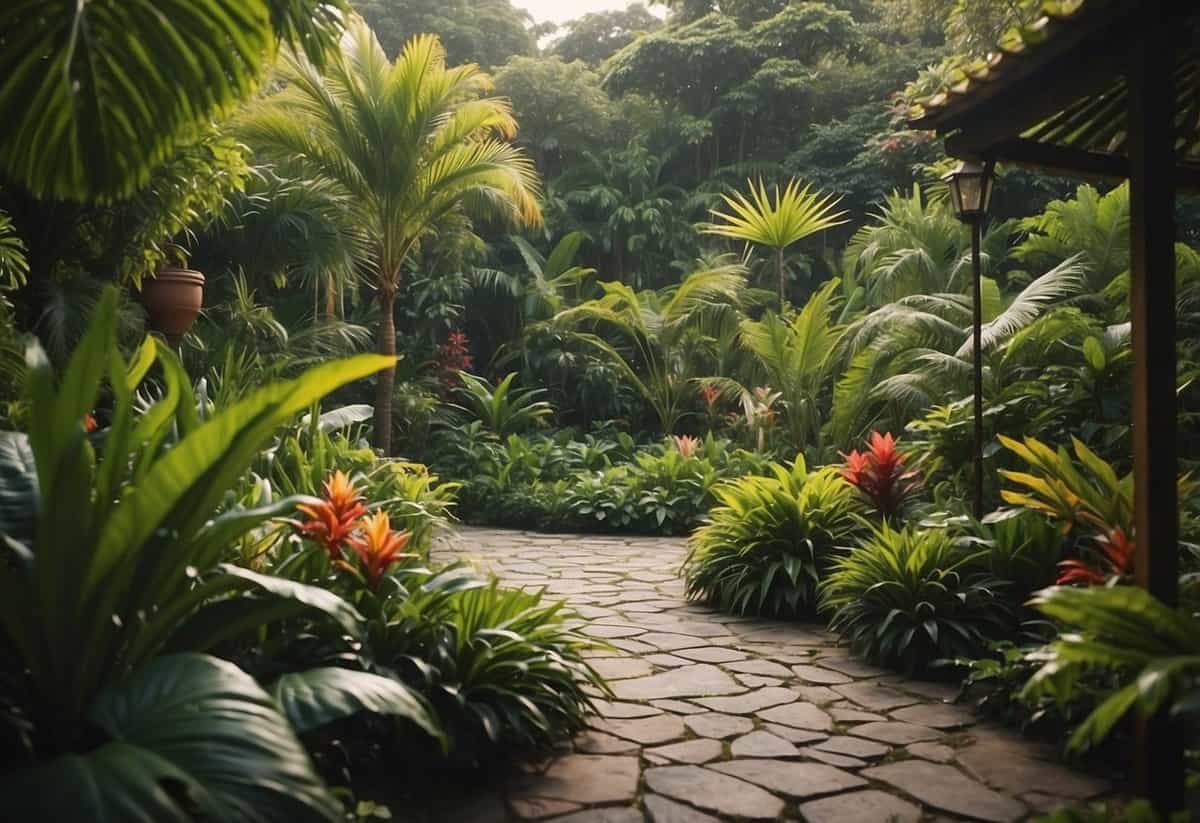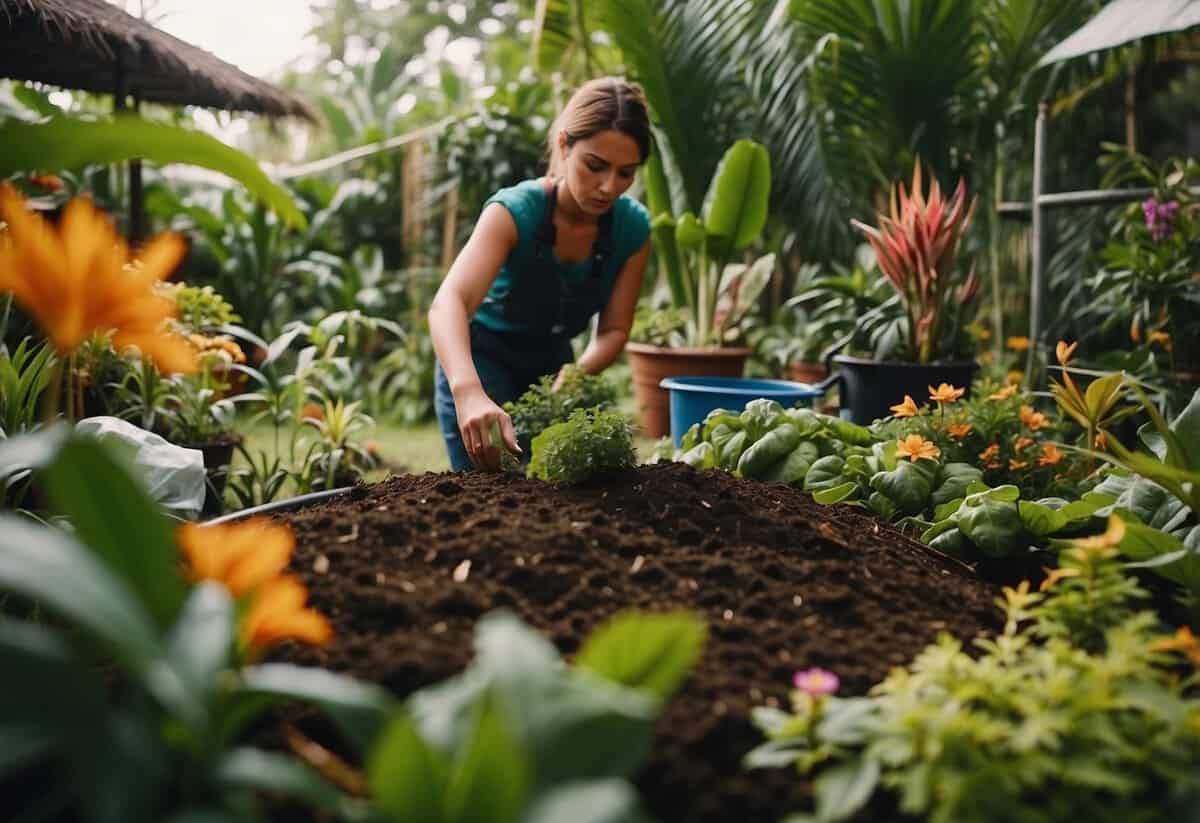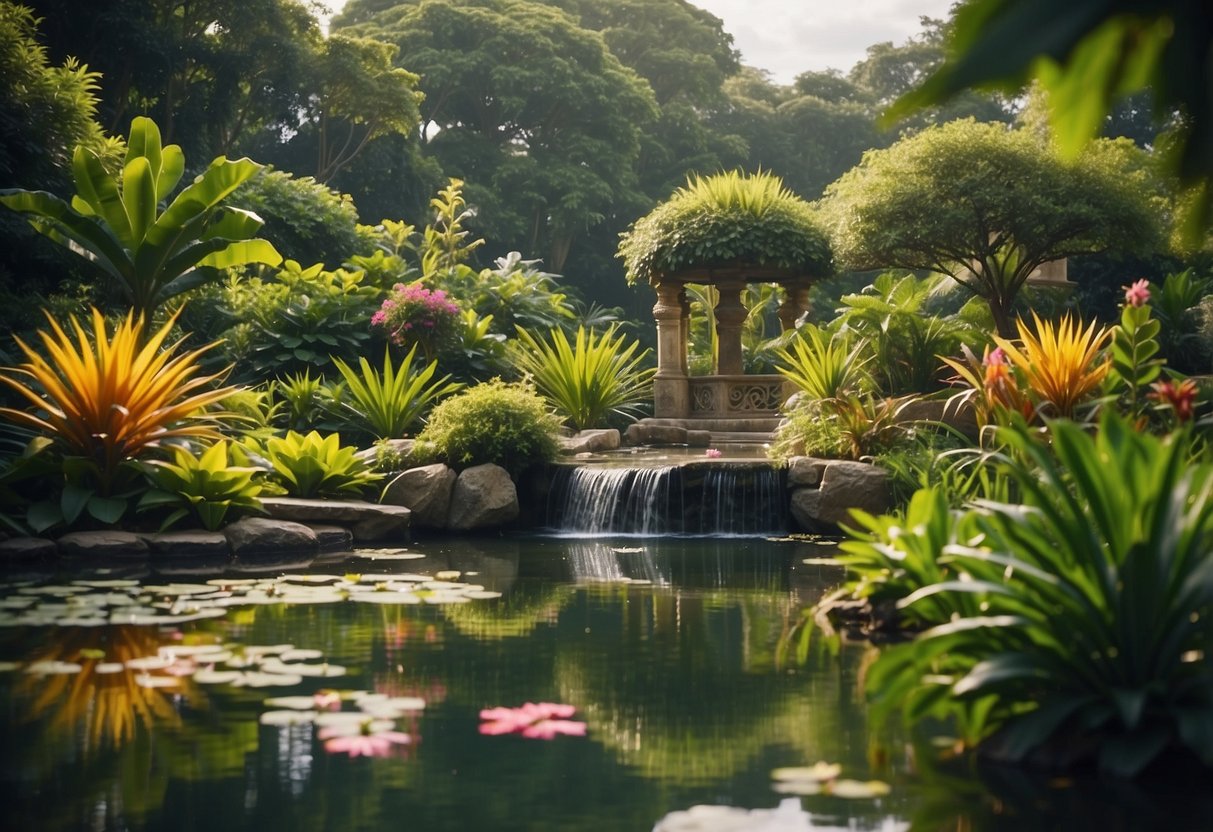Tropical Garden Tips: Create Your Lush Paradise
Creating a tropical garden can transform your backyard into a lush, relaxing retreat. You don’t need to live in a tropical climate to enjoy the beauty of exotic plants and vibrant foliage. By using some clever design tips and plant choices, you can bring the ambiance of the tropics to your home.

Why settle for an ordinary garden when you can have your own piece of paradise? With a few strategic choices, you will be able to create a stunning tropical garden that impresses guests and provides a relaxing escape right in your backyard. From plant selection to creative décor, your tropical oasis awaits.
1) Choose Native Plants

Native plants are ideal for your tropical garden. They adapt well to local conditions and need less care, making them an easy choice.
Choosing native plants helps support local wildlife. Birds and insects thrive on familiar plants.
Native plants also tend to be more resistant to pests and diseases, which means healthier growth and fewer problems.
2) Install a rainwater collection system

Collecting rainwater is a smart way to keep your tropical garden hydrated. You can use materials like aluminum, stainless steel, or PVC for durability.
Choose a barrel designed to hold water. It should have thick walls to resist freezing and sunlight.
Properly slope your gutters to direct the water flow efficiently, about 1/2 inch for every 10 feet. This helps prevent leaks and ensures smooth collection.
3) Utilize Companion Planting

You can make your tropical garden thrive by using companion planting. Pairing certain plants together can offer natural pest control and improve soil fertility. For instance, pairing garlic with potatoes helps deter aphids.
Plants like beans, corn, and squash support each other’s growth. These combinations maximize your garden space while reducing the need for chemical fertilizers and pesticides.
Choosing the right plant combinations can help create a beautiful and healthy tropical garden. For more tips, check out the Complete Planting Companion Guide.
4) Establish a composting routine

Start by choosing a compost bin or tumbler. Place it in a partially sunny spot in your garden.
Mix green materials like fruit scraps with brown materials such as dried leaves. Aim for about three parts browns to one part greens for the best results.
Keep the compost moist but not soggy. Turn the pile regularly to aerate it. This helps it break down faster and keeps it from smelling bad.
5) Incorporate Tropical Fruit Trees

Adding tropical fruit trees can make your garden more beautiful and productive. For instance, you can place a row of banana trees at the border.
Mango and avocado trees add lush, green foliage and tasty fruits. Be sure to prune them to keep them healthy.
Tropical gardens benefit from the variety and texture that fruit trees provide. Try mixing different species for a layered effect.
6) Invest in a Drip Irrigation System

A drip irrigation system is a smart way to keep your tropical garden hydrated. This method delivers water directly to the roots, reducing water waste.
Installing a drip irrigation system is easier than you might think. It involves connecting a network of tubes and emitters to a water source.
Regularly checking the system for leaks or damage ensures it remains effective. This will help you maintain a lush, healthy tropical garden with minimal effort.
7) Create Shaded Seating Areas

Adding shaded seating areas in your tropical garden creates a cool spot to relax. Use structures like pergolas or shade sails to block the sun.
Place cozy chairs or benches under large trees with dense canopies for natural shade.
Consider using plants like bamboo or palms to form a natural, shaded nook.
Comfortable seating encourages spending more time enjoying your garden.
8) Add Vibrant Flowering Plants

Brighten up your tropical garden with colorful blooms. Consider planting options like Canna lilies, known for their stunning red, orange, yellow, and pink flowers.
Another great choice is Hibiscus, which offers large, eye-catching blooms in various colors. These plants thrive in warm climates and add a pop of color.
For a unique touch, try Bird of Paradise. Its unusual shape and vivid colors make it a standout feature in any garden.
9) Use organic fertilizers

Organic fertilizers are great for your tropical garden. They improve soil health without harmful chemicals. Compost, manure, and bone meal are common choices. These options enrich the soil with essential nutrients.
Dilute liquid organic fertilizers with water for even distribution. This helps your plants absorb the nutrients effectively. Regular use can enhance both growth and fruit production.
For more information, visit Organic Gardening in the Tropics.
10) Design Multi-Layer Planting

Designing a tropical garden with multi-layer planting creates a lush and vibrant look. Start by placing taller plants at the back.
Next, add medium-height plants in the middle.
Finish with shorter plants in the front.
This arrangement helps each plant get enough sunlight and creates a beautiful, layered effect that mimics natural tropical landscapes.
Try using different colors and textures to make your garden even more interesting.
Planning Your Tropical Garden

When planning your tropical garden, you should focus on finding the perfect spot and preparing the soil to create a lush, vibrant space. Follow these tips to ensure your garden thrives.
Choosing the Right Location
Choose an area with plenty of sunlight. Tropical plants need about six to eight hours of direct sunlight each day. Consider your garden’s layout carefully to maximize sun exposure.
Observe your garden at different times of the day. This helps you understand the light patterns. Avoid spots overshadowed by buildings or trees.
Wind protection is also essential. Use hedges, fences, or other structures to shield your plants from strong winds. A calm environment helps your plants grow better.
Soil Preparation for Tropical Plants
Tropical plants prefer well-draining soil. Test your garden soil to check its texture and drainage. Sandy or loamy soils work best for these plants.
Enrich your soil with organic matter like compost or rotted manure. This improves soil structure and provides nutrients.
Consider adding a layer of mulch to retain moisture and keep the soil temperature stable.
Avoid using heavy clay soils. If your soil is clayey, mix in coarse sand or gravel to improve drainage.
Regularly check soil moisture levels, as tropical plants need consistent watering. Install a drip irrigation system to keep the soil evenly moist and avoid waterlogging.
Selecting Tropical Plants

Choosing the right tropical plants is crucial to creating a lush, vibrant garden. You need to pick species that not only look stunning but also thrive in your specific environment.
Popular Tropical Plant Varieties
Popular tropical plants can transform your garden with their bold colors and unique textures. Consider Canna lilies for their dramatic foliage and bright blooms. They are easy to grow and add an exotic touch.
Fatsia Japonica is another great choice, known for its large, glossy leaves that create an instant jungle vibe. If you have space for a larger plant, Banana plants (Musa) are perfect for a tropical feel with their broad leaves.
Bird of Paradise (Strelitzia) is ideal for striking orange and blue flowers. Heliconia is amazing for adding height and tropical flair with its vibrant bracts. Adding Ferns like the Bird’s Nest Fern can also enhance the exotic look with their lush greenery.
Understanding Plant Hardiness Zones
Knowing your plant hardiness zone is vital for plant selection. Tropical plants generally thrive in zones 10 to 12. Check your local zone to ensure the plants you choose can survive the winter.
If you live in a cooler zone, you can still enjoy tropical plants by using containers. Move the plants indoors during colder months.
Partial shade and protection from strong winds are essential for many tropical species. Light requirements can vary, so place sun-loving plants in the brightest spots and shelter shade-loving plants.
By understanding these zones, you can pick plants that will flourish and keep your garden looking vibrant year-round. This approach helps maintain the health and beauty of your tropical garden.
Maintaining Your Tropical Garden

Proper care is essential to keep your tropical garden healthy and beautiful. Focus on correct watering, preventing pests and diseases, and using the right fertilizers and mulch.
Watering Techniques
Tropical plants need consistent moisture. Water your garden regularly, especially during dry periods. Early morning or late afternoon watering is best to reduce evaporation and prevent leaf burn. Use a soaker hose or drip irrigation to deliver water directly to the roots and avoid wetting the foliage, which can lead to disease.
Check the soil moisture regularly by sticking your finger into the soil about 2 inches deep. If it feels dry, it’s time to water. Mulching can help retain soil moisture and reduce watering frequency.
Pest Control and Disease Management
Monitor your plants regularly for signs of pests or disease. Common tropical garden pests include aphids, mealybugs, and caterpillars. Use insecticidal soap to control these pests, applying it in the early morning or late evening to avoid leaf burn.
For diseases, keep an eye out for yellowing leaves, black spots, or mildew. Remove affected leaves and ensure good air circulation by spacing plants appropriately. Avoid watering the leaves and instead focus on the soil.
Fertilizing and Mulching
Tropical plants thrive with nutrient-rich soil. Use a balanced fertilizer every 4-6 weeks during the growing season. Choose fertilizers with equal parts nitrogen, phosphorus, and potassium. Follow package instructions for the correct dosage.
Mulching helps retain moisture, suppress weeds, and provide nutrients as it decomposes. Use organic mulches like bark chips, compost, or straw. Apply a 2-3 inch layer around your plants, but keep it away from the stems to prevent rot.
By following these tips, your tropical garden will become a lush and vibrant oasis.







